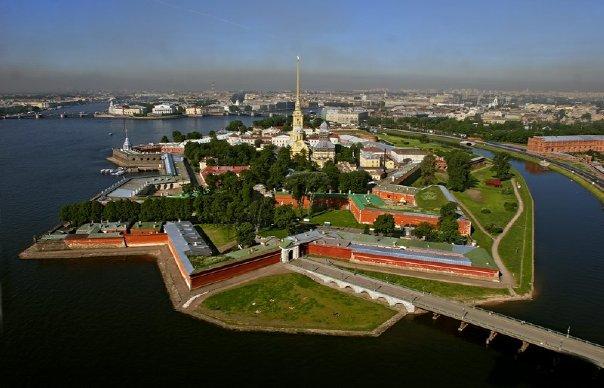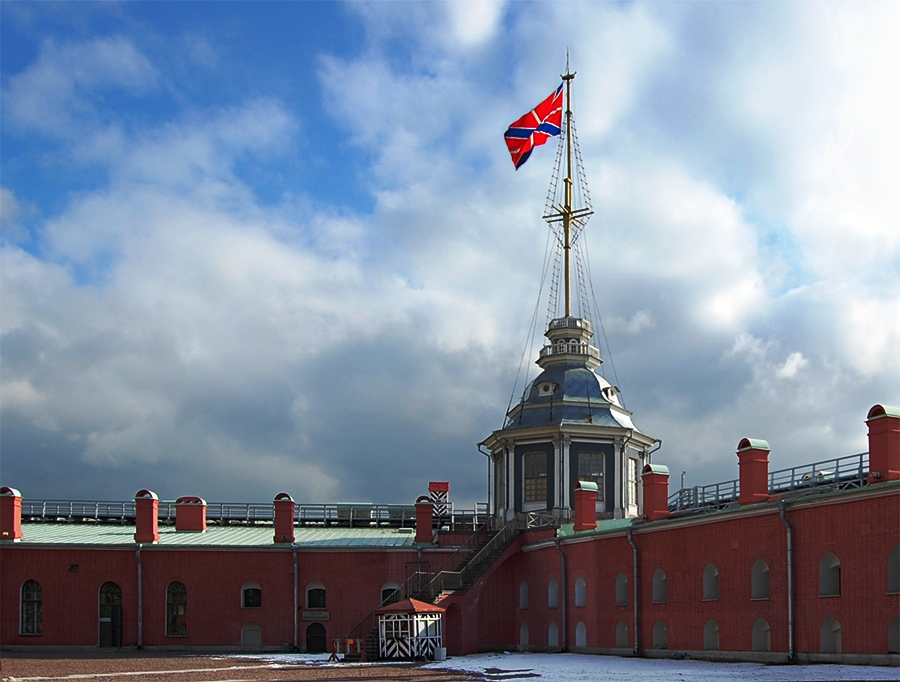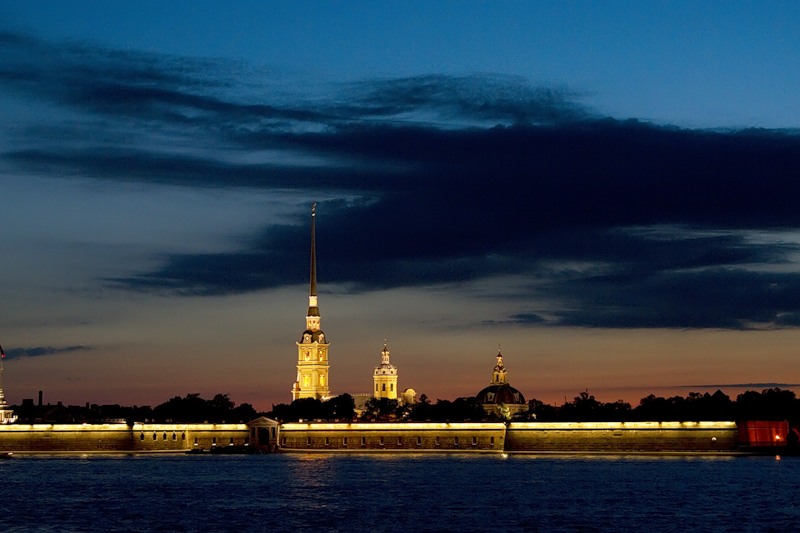|
The Peter and Paul’s Fortress was established
in May 1703, the third year of the Great Northern War with Sweden, which
would last until 1721. Having reduced Swedish positions along the Neva River
from Lake Ladoga,
Peter wanted to protect Russia's
position in the exit to the Baltic Sea, so that it was decided to make a fortified
point in the Neva estuary. Peter the first
turned his attention to a small island called Zayachy (Hare’s) Island. Being situated at the spot where the river
branches out into 2 arms, the island made a good defense position and it was
decided to build a new fortress there since the artillery fire of the island
could bar the way to enemy ships on both the Big and Small Neva. The first
stone was laid by Peter the first himself on May 16, 1703 (May 27 according to
the new calendar) and since that time this day is considered to be and
celebrated annually as the birthday of Petersburg.
The first name of the fortress was "Saint
Peter's Burg", and then it was renamed into the Peter-and-Paul Fortress
after the cathedral built on its territory. About twenty thousand men took part
in building of the fortress and it was completed very fast. By the autumn of
1703 earthen emplacements had already been built, and about 2 years later, when
the situation permitted, they started replacing wooden walls with stone ones. The
fortress is shaped as an elongated hexagon, repeating the outlines of the
island, with 6 bastions connected by straight walls, built of stone and brick.
The six bastions are named Golovkin, Menshikov, Naryshkin, Trubetskoy and Zotov
after the supervisors of their construction and one – after the tsar himself.
From the north the fortress was protected by the Crownwork and in 1730-1740 two
ravelins, named after St.Ioan and St.Alexis. The dominant feature within the
Fortress is the Cathedral of Saints Peter and Paul, designed by Domenico
Trezzini in a radical departure from traditional Russian church architecture. In
1740 it was converted into a political prison. It should be noted that the
fortress was never used for any military purposes except for the October
revolution of 1917, when the Fortress put its gun to use. After the revolution
the fortress was turned into the museum.
|





